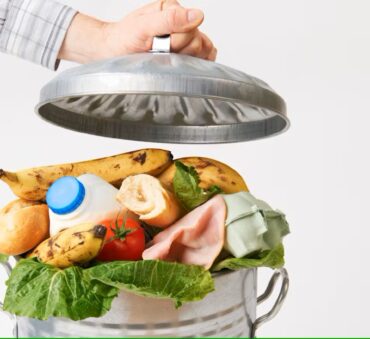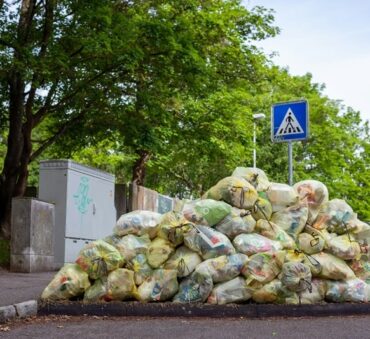Many of us see food waste in our everyday lives; we go out to eat and our loved ones leave unfinished food on their plate, an old tomato starts rotting in the fridge, or we throw things out before they expire. While these acts may seem small, they’re part of a much bigger problem.
Food waste statistics show that an estimated 30-40 percent of the food supply in the United States is wasted, resulting in around 133 billion pounds and $161 billion worth of food loss each year. The most wasted foods are also some of the everyday supplies we rely on, yet about a pound of food is wasted per person every day in the United States.
While this is a nationwide crisis, the amount of food waste by state varies, with some states producing quite a bit more than others. In this article, we’re going to explore food waste statistics by state, identifying the states with the most and least waste.
Key Takeaways
- LawnStarter did a study comparing food waste by state based on how much food each state wastes, how much they repurpose, and what measures they have in place to reduce food loss.
- The most wasteful states are: Arizona, North Dakota, Hawaii, Nevada, Oklahoma, West Virginia, Wisconsin, Georgia, Montana, and South Dakota.
- The least wasteful states are: Massachusetts, Connecticut, Oregon, Vermont, Louisiana, Washington, Iowa, New York, California, and Illinois.
- In general, states with low food waste have comprehensive food recovery programs in place, which involve partnerships with food banks, nonprofit organizations, and waste management companies, as well as tax incentives, investments in composting facilities, and statewide food waste reduction goals.
- High-waste states often have little repurposing and mitigation efforts, a lack of public awareness, and a lack of coordination between communities, organizations, and the government.
Understanding the Magnitude of the Problem
Food waste is a global issue, with one-third of the world’s food wasted annually. That said, the United States discards more food than any other country in the world, with food being the single largest component taking up space inside U.S. landfills.
Food waste affects the environment in a number of ways, contributing to greenhouse gas emissions, pollution, and having a negative effect on biodiversity. The effects of food waste in landfills also can’t be ignored, as food waste decomposition in landfills releases methane gas emissions, a powerful greenhouse gas that contributes to global warming. Studies show that municipal solid waste landfills are the third-largest source of methane emissions from human activities in the United States.
There’s also an undeniable economic impact of food waste in the United States. With almost 40% of the food supply wasted, the annual costs are estimated at $218 billion, or 1.3% of GDP. When we consider that 44 million people face food insecurity in the U.S., while an estimated 130 billion meals go to waste every year, there’s a dire need to find sustainable solutions to manage and reduce waste.
LawnStarter did a study comparing food waste statistics by state, based on how much food they waste, how much they repurpose, and what measures they have in place to reduce food loss. Based on their findings, they ranked each state on their overall wastefulness, resulting in the following lists.
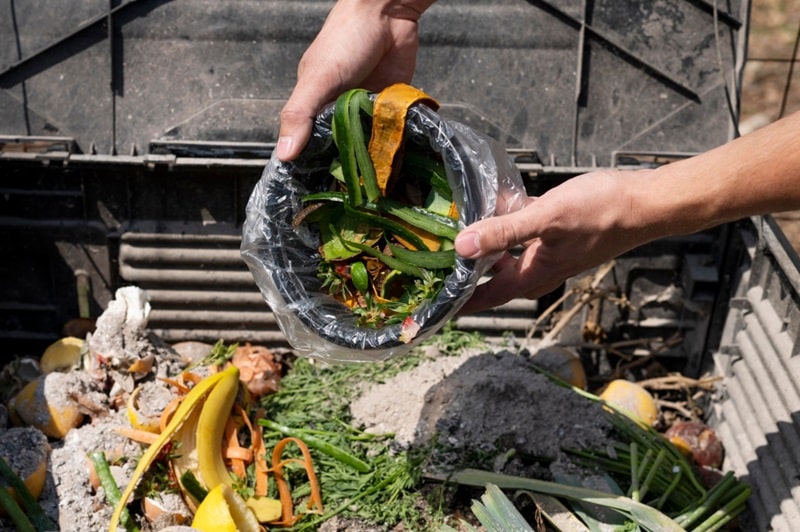
Most Wasteful States
Arizona
Food waste in Arizona has the worst overall rank in LawnStarter’s study, with the lowest share of recycled food and the third-lowest share of donated food. Studies on Arizona food waste show that this state throws away $9.5 billion in food every year, while 1 in 9 Arizona residents struggle to find their next meal.
North Dakota
North Dakota ranks second in overall food waste by state. It ties for the second-lowest amount of food banks and the fourth-lowest amount of food waste solution providers. With better food waste mitigation efforts, North Dakota may improve its ranking, but for now, it’s second on our list of the most wasteful states.
Hawaii
Hawaii has no bans on industrial food waste disposal and no statewide food sharing program. The total food waste in Hawaii is estimated at over $1 billion per year. This is caused by multiple factors, such as a lack of infrastructure to reduce waste, excessive tourism, and the very few food waste solution providers available.
Nevada
In Nevada, food waste was the third-largest component of Nevada’s municipal organic material waste in 2018, translating to about 24,488.91 tons. Las Vegas is a huge contributor to the problem, with major resort companies overproducing at restaurants, hotels, and buffets. Nevada also ranks third for the lowest share of recycled food, meaning a comprehensive waste management strategy could help divert waste from landfills.
Oklahoma
Oklahoma landed number 5 on the list for most wastefulness, yet studies show that 1 in 4 Oklahoma children are food insecure. Oklahoma is the sixth-worst state for both repurposed food waste and overall food waste mitigation efforts. It also ties for second with the lowest number of composting facilities.
West Virginia
West Virginia ties for second place for the fewest food waste providers, placing it fourth lowest in overall food mitigation efforts. While it may generate less waste than the states mentioned above, its underdeveloped repurposing and mitigation methods place it high on the list of wasteful states. With food insecurity in West Virginia averaging 14%, donation efforts should be a high priority.
Wisconsin
Wisconsin was placed as the 7th most wasteful state in LawnStarter’s study for having the lowest share of donated food out of all the states. Upon looking at food waste statistics by state, we saw that in 2020, an estimated 615,500 tons of wasted food and 238,500 tons of food scraps were disposed of in Wisconsin landfills.
Georgia
Georgia is ranked at number 8 for overall wastefulness. In Georgia, food residuals make up 12 percent (more than 800,000 tons) of the waste sent to Georgia landfills each year, with approximately 48% coming from the greater Atlanta area.
Montana
Ranking at number 9 for the overall most wasteful state, Montana has recently made an effort to improve its mitigation efforts. In fact, the EPA gave DEQ a 2018 Food Recovery Challenge Regional Award in 2017 for diverting 829 tons of wasted food from landfills. So while it ranks on LawnStarter’s list, it’s making great efforts to improve its ranking.
South Dakota
South Dakota ranks as the 10th most wasteful state overall, primarily due to its limited number of food waste solution providers. Studies show that only 10.3% of adults in the state meet the recommended fruit intake and 7.4% meet the recommended vegetable intake. With proper donation efforts and initiatives in place, South Dakota could help bridge this gap.

Least Wasteful States
Massachusetts
On the other end, great efforts have been made to reduce food waste in Massachusetts, earning its rank as the least wasteful state in the United States. This is in large part due to its food waste mitigation efforts. In fact, Massachusetts has the second-highest share of recycled food, the second-most composting facilities, and the third-highest share of donated food.
Connecticut
As the second-least wasteful state, Connecticut has the fourth-highest share of recycled food and the second-highest share of donated food. This may be due to strict Connecticut waste recycling laws, where eligible companies and manufacturers must separate their organic waste and ensure proper recycling at an authorized composting facility.
Oregon
Oregon ties for third place for the state with the most food banks. Surprisingly, Oregon does not have a state-wide organic waste ban or waste recycling laws. That said, Oregon allows a tax credit for crops donated to a gleaning cooperative, food bank, or other charitable organization engaged in the distribution of food without charge. This initiative helps keep food waste in Oregon out of landfills.
Vermont
Vermont has various food waste mitigation efforts that have proven successful. A huge milestone in reducing food waste in Vermont was the statewide ban on the disposal of food scraps in the trash or landfills. Today, most of Vermont’s food scraps are composted at composting facilities, and some are fed to animals or processed at anaerobic digesters.
Louisiana
Louisiana may not have many composting facilities, but it was ranked as the 5th least wasteful state for its recycling efforts. It has the highest share of recycled food nationwide.
Washington
Washington is the 6th least wasteful state, which may be in part due to its commitment to reducing landfill-disposed organic material by 75% by 2030. One of the ways it’s working towards this goal is through the recent passing of its Organics Management Law, a law that requires diversion of organic materials away from landfill disposal and towards food rescue programs and organics management facilities.
Iowa
Iowa has the third highest share of recycled food, and while it doesn’t have any organic waste bans or waste recycling laws in place, it does offer tax incentives. Taxpayers who produce food are eligible for a tax credit for the donation of food to emergency feeding organizations and food banks.
New York
New York is the state with the 5th most composting facilities and the 2nd most food waste solution providers. One of the laws on food waste in New York that earns them this position is the NYS Food Donation and Food Scraps Recycling Law, a law that requires eligible businesses and institutions to donate excessive food or recycle all remaining food scraps.
California
California has the most food banks out of all the states in the U.S., placing it at the top of the list for food waste mitigation efforts and second for highest repurposed food waste. As part of its effort to reduce food waste in Los Angeles and California, a law was passed that requires people and organizations throughout California to separate organic material from other garbage.
Illinois
Illinois ranks number 9 for the best repurposed food waste and number 10 for the overall least wasteful state. Illinois’ Wasted Food Action Alliance, made up of organizations, businesses, and institutions, collaborates to find solutions to address food waste, focusing on areas such as reducing, donating, and composting waste.
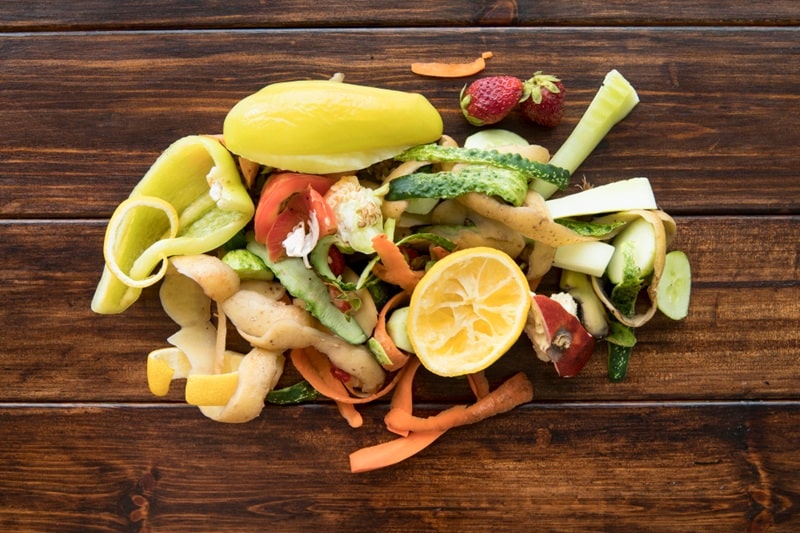
State Strategies and Initiatives
We’ve discussed some of the food waste laws in the U.S., but let’s explore some of the other initiatives that are making a difference.
The food waste ban in Massachusetts is a great example. The Commercial Food Materials Disposal Ban prohibits the disposal of commercial organic waste by businesses and institutions that generate a half-ton or more weekly.
Some cities also actively encourage their residents to recycle by providing them with the resources to do so. San Diego, for instance, introduced a weekly organic waste collection program, providing participants with a free kitchen pail and green bin. These kinds of initiatives help encourage the community, providing them with both the knowledge and resources to make a difference.
Another great way to encourage residents and businesses is with tax incentives. For instance, to reduce food waste in Washington, DC, there is a tax credit for the donation of produce grown at urban farms and community gardens to food banks and shelters within the district.
To reach the EPA and USDA’s goal of reducing food loss and waste in the U.S. by 50% by 2030, there have also been acts that have been passed to promote food donations. A great example of this is the Bill Emerson Good Samaritan Food Donation Act. This act urges food donations to nonprofit organizations by providing legal protection to individuals and organizations that donate food in good faith to those in need.
In general, states with low food waste have comprehensive food recovery programs in place, which involve partnerships with food banks, nonprofit organizations, and waste management companies. Other ways to reduce state-wide waste are tax incentives, investments in composting facilities, and statewide food waste reduction goals.
Challenges in High-Waste States
Tackling the issue of food waste at the state level can be a complex challenge. Upon reviewing the food waste statistics by state by LawnStarter, the most wasteful states had very little repurposing and mitigation efforts. This shows that not prioritizing recycling and waste management centers has a direct reflection on how much waste a state produces.
Some states also have an overall lack of consciousness surrounding the issue. Lack of public awareness makes it difficult to change behaviors, with many individuals, businesses, and institutions not being fully aware of the environmental, social, and economic consequences of food waste.
Lack of coordination between government agencies, businesses, nonprofits, and communities is also an issue. Every state has its own regulations, meaning some don’t have them at all, some cities create their own, and in some cases, some cities may refrain due to infrastructure and economic barriers.
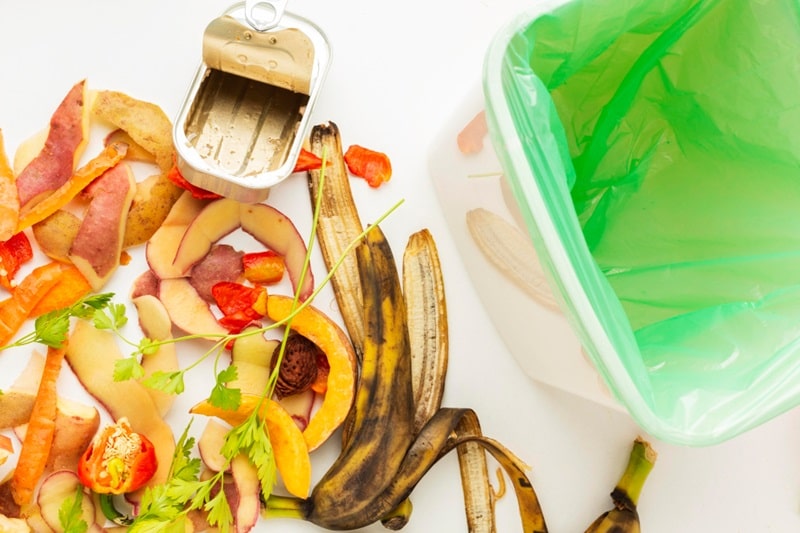
Fighting Food Waste
Effective strategies to reduce food waste should be implemented at the individual, commercial, and governmental levels.
At the individual level, consumers should focus on changing their buying and consuming habits—not buying in bulk, managing portions, meal planning, and repurposing ingredients to use them in other ways. A better understanding of food waste expiration labels will also prevent consumers from throwing away healthy products.
At the commercial level, businesses need better supply chain management, composting efforts, and partnerships with local waste management companies. Technology plays a big role in this, as it can monitor inventory more efficiently, improve temperature and humidity level regulation, and optimize logistic routes.
Governments also play an important role, as their laws and incentives are what encourage companies and residents to contribute. These acts can be implemented on a nation- and state-wide basis.
Overall, there are many effective food waste solutions to reduce waste in the United States, but it takes collaboration between all areas. Companies like Shapiro help businesses manage their waste in an environmentally friendly and cost-efficient way. Access to such solutions, as well as the implementation of innovative regulations, will help fight the food waste crisis.
The Bottom Line
Food waste statistics by state help us understand what initiatives some states are taking to manage their waste and how we can implement them in high-waste states. Overall, the goal is not only to reduce food waste by state but also to address the issue on a national level. This takes collaboration between businesses, residents, and governments to help us reach a common goal: keeping waste out of landfills.
For businesses interested in preventing large-scale waste, Shapiro offers sustainable commercial food waste recycling services and organic waste management solutions. We’ll work with you to find a solution for your specific business and industry, helping you stay compliant with regulations and tax incentives.
Contact us to explore our comprehensive waste management solutions.
Baily Ramsey, an accomplished marketing specialist, brings a unique blend of anthropological insight and marketing finesse to the digital landscape. Specializing in educational content creation, she creates content for various industries, with a particular interest in environmental initiatives.

